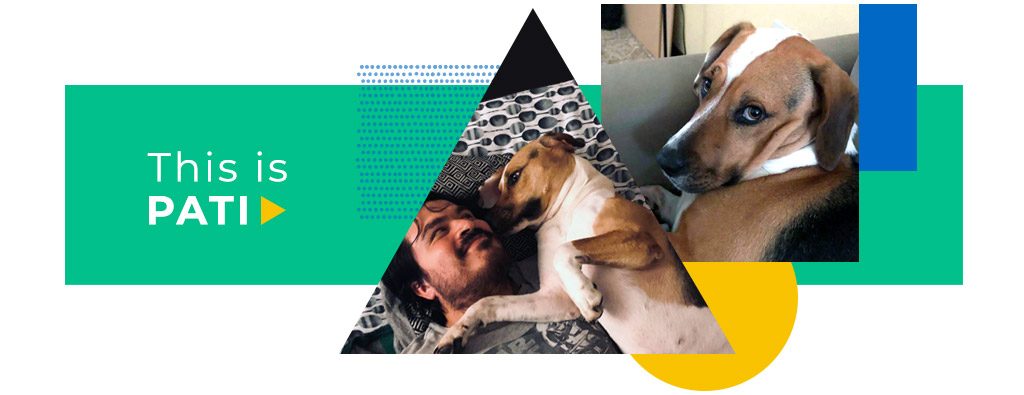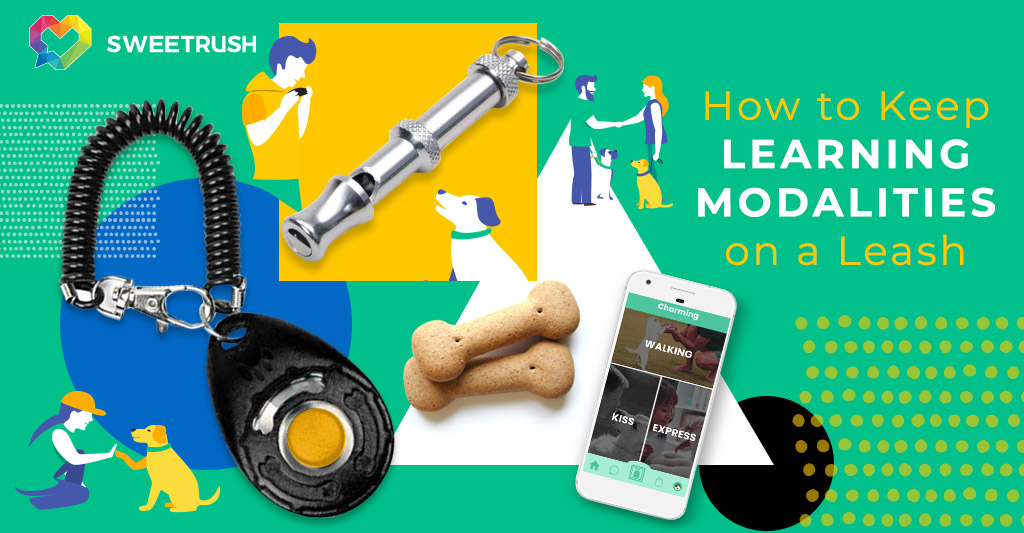Looking to make the switch from classroom to eLearning, blend the two, or offer both as separate tracks? Training across learning modalities can be a great learning opportunity. Just ask my dog.
Not long ago, I read an article on learning modalities that made me think about my dog.
Her name is Pati, and she’s a three-and-a-half-year-old English foxhound. I adopted her a year ago and she’s the cutest, most loving dog—well, she loves humans, anyway. The thing about Pati is that she’s really mean toward other quadrupeds, dogs and cats in particular.

There’s a pretty sad story behind Pati’s rage. During her first year, she lived in a shelter with hundreds of other dogs. She was unable to socialize with most of them because she was scared. Then, she was adopted by a married couple who kept her in a tiny yard. She shared that space with a bigger dog who abused her.
When I finally adopted Pati, I made sure to give her a home with no shortage of love and cuddles. She loves people now, but other animals are still a big no-no. Here’s the catch, though: My girlfriend has four cats. We all—two humans, five animals—want to move in together. We need Pati to learn how to get along with the cats.
The solution is, of course, to train Pati, which brings me to the article I mentioned, Learner Experience Across Modalities: A Learning Leader Challenge, published on TrainingIndustry.com.
The author, Stephani Mager-Lightfoot, shares research gathered by Training Industry, Inc., which found that “as we have introduced more [learning] modalities into the workplace, it has become a challenge for learning leaders to provide excellent learner experiences across them.”
In other words, multimodal training programs are an excellent opportunity for both learning leaders and learners, but you need to know how to use them effectively to drive learning and business results.
Learning Modalities: A Combination Does the Trick
I had a similar response from the dog school I contacted to train Pati. Dogs, they told me, react to different situations based on both physical and psychological responses; in order to modify their behavior, trainers need to combine methods for both facets.
Training for humans in the workplace is, obviously, far more complex than training for dogs. However, the combination of different learning modalities can indeed be a great opportunity for people too. Whether you’re switching from classroom to eLearning, blending the two, or offering both as separate tracks, each modality can provide an effective—yet very different—learning experience.
“Not all learning can be achieved equally well by all learning modalities—that just isn’t realistic,” says Annie Hodson, Solution Architect at SweetRush, quoted in the article. She suggests combining “different modalities to create the experiences you’re looking for.”

Switching a learning event from one modality to another can be far more challenging than going from physical to psychological training for dogs. After a few lessons, Pati only needed a treat to make her jump over a fence or be quiet on command. On the other hand, maintaining the informal learning aspect that comes with ILT events—which is sometimes more valuable than the learning content itself—when changing to a another modality is way more complicated.
However, for Danielle Hart, SweetRush’s Director of Marketing who was also quoted in the article, there is a way to “create an emotional connection with [and between] learners when you change the modality from something that’s face-to-face to something that’s virtual.” For example, by adding elements of vILT and gamification to an online course, you build an engaging experience that works in a complementary way with an eLearning component and change a possibly negative perception a learner has about eLearning.

Training a dog to be obedient and make friends with a bunch of cats can be challenging. Yet, there are ways to make it work. Similarly, there are plenty of steps you can take toward successful multimodal learning, and you can read all about them in Learner Experience Across Modalities: A Learning Leader Challenge.




